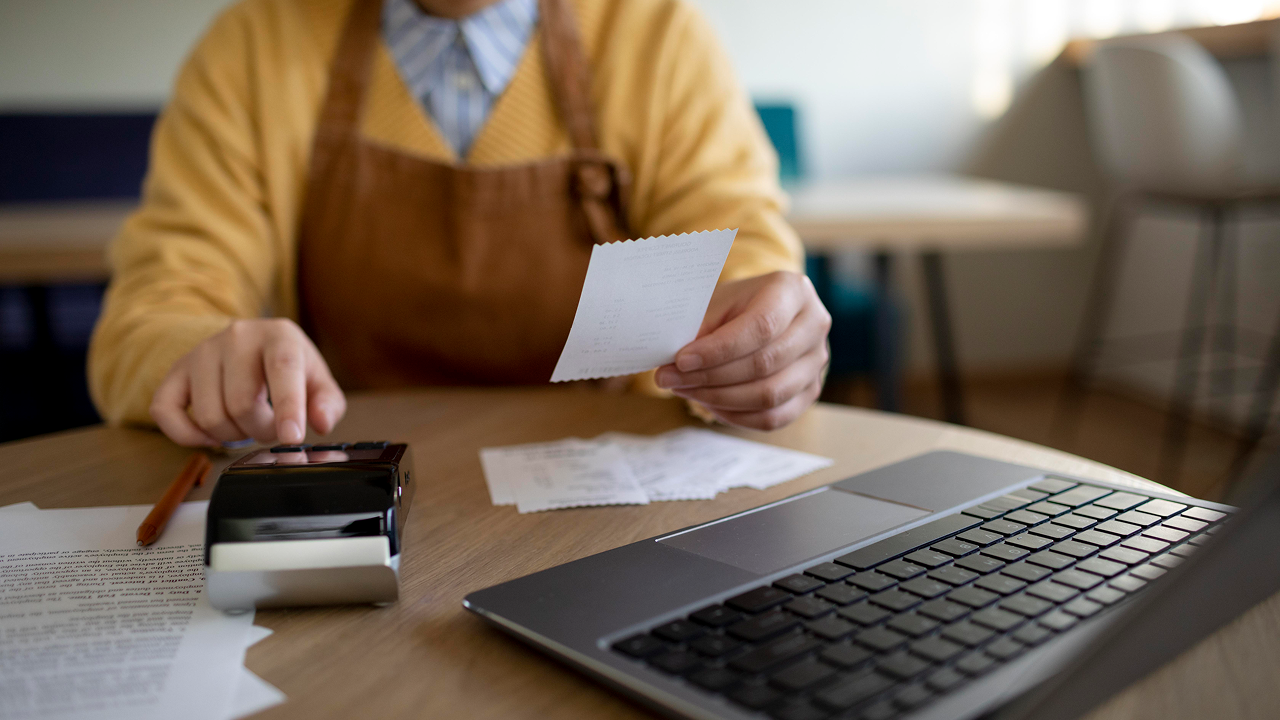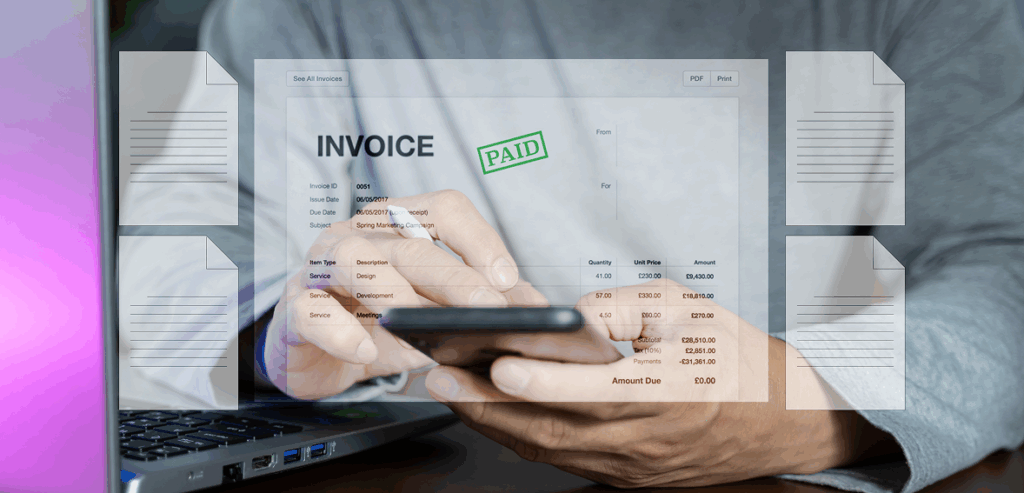
By Mary Vizcaino July 17, 2025
Receipts have long been an essential part of any purchase. Whether for record-keeping, returns, or tax purposes, customers have relied on them for decades. But as technology continues to evolve and consumer behavior changes, businesses are faced with a new question—should they stick with physical receipts or make the shift to digital?
The debate between digital and physical receipts isn’t just about convenience or preference. It reflects broader changes in how customers interact with brands, value sustainability, and manage their personal data. For businesses, the right approach can improve customer satisfaction, reduce costs, and align with modern trends.
The Evolution of the Receipt
Receipts have changed a lot over the years. What began as handwritten notes turned into machine-printed paper slips and now increasingly takes the form of emails or text messages.
Traditional Paper Receipts
For decades, printed receipts were the only option. They provide tangible proof of purchase and can be filed, stored, or physically presented when needed. Paper receipts became standard in every business, from department stores to small bakeries, and their format became familiar to both merchants and consumers.
The Rise of Digital Alternatives
In recent years, digital receipts have emerged as a more modern solution. Businesses began offering email or SMS receipts to cut down on paper usage, reduce printing costs, and provide customers with a more lasting and easily searchable record. These digital options are now offered across industries, from big box retailers to coffee shops and salons.
Changing Customer Habits
Today’s consumers are highly mobile and increasingly digital. Many of them manage their finances through mobile banking apps, track purchases online, and expect a certain level of technological integration in the businesses they engage with. This shift in behavior has helped push digital receipts into the spotlight.

Benefits of Digital Receipts
Digital receipts offer a number of advantages for both businesses and customers. As convenience and sustainability become bigger priorities, these electronic alternatives are gaining traction.
Ease of Storage and Organization
Digital receipts can be saved in email folders, mobile apps, or even integrated with financial tools like budgeting software. Customers no longer need to keep stacks of paper or worry about faded ink. Searching for a past purchase becomes faster and simpler.
Environmental Considerations
Paper receipts may be small, but the environmental impact is significant. Thermal paper is not recyclable, and the printing process requires energy and generates waste. Digital receipts eliminate paper use entirely, helping businesses appeal to eco-conscious consumers and reduce their footprint.
Reduced Operational Costs
For businesses, going digital can save money. No need to buy thermal paper rolls, maintain receipt printers, or deal with frequent jams. These small savings add up over time, especially in high-volume environments like restaurants, salons, and retail stores.
Enhanced Marketing Opportunities
Email receipts open the door to subtle marketing. Businesses can include loyalty offers, links to product reviews, or feedback requests. It creates a direct channel of communication with the customer that paper simply cannot match.
Downsides of Digital Receipts
Despite the benefits, digital receipts are not without their challenges. For some customers, the convenience may be outweighed by concerns over privacy, accessibility, or digital clutter.
Data Privacy Concerns
Not everyone is comfortable sharing their email or phone number at checkout. Concerns over spam, data breaches, or unwanted communication may cause customers to decline digital receipts. Businesses must be transparent and cautious in handling customer data.
Dependence on Technology
Sending digital receipts assumes that customers have access to their email or phone and that systems are running smoothly. A system outage, incorrect entry, or spam filter can lead to a lost receipt, which may frustrate the customer and complicate returns or recordkeeping.
Preference for Tangible Proof
Some customers, especially older generations or those less digitally inclined, still prefer a printed slip. It serves as immediate proof of purchase that can be tucked into a wallet or handed to another person. For these individuals, digital options may feel unfamiliar or inconvenient.

Advantages of Physical Receipts
Though digital options are growing in popularity, physical receipts still have their place in modern commerce. They offer immediate reliability and appeal to those who prefer something they can hold.
Instant and Familiar
Paper receipts are printed instantly and handed directly to the customer. There’s no need to ask for personal information, wait for delivery, or worry about typos. This simplicity makes them easy to understand and trust.
No Data Exchange Required
Unlike digital receipts, paper versions do not require the customer to share their contact information. This allows for quick, anonymous transactions, which some people prefer. It also eliminates the risk of sending a receipt to the wrong person.
Legally Recognized Documentation
In many jurisdictions and industries, physical receipts are still accepted as primary proof for returns, expense claims, and audits. Some businesses and institutions even require printed versions for verification purposes, making them necessary in certain scenarios.
Challenges of Physical Receipts
Although paper receipts remain functional, they come with their own set of limitations, especially in a world that’s moving increasingly toward digital convenience.
Environmental Waste
Thermal paper receipts contribute significantly to environmental waste. Not only do they require trees and water to produce, but they are also coated with chemicals that make recycling difficult. For environmentally conscious brands and customers, this can be a turn-off.
Clutter and Wear
Physical receipts often end up crumpled, lost, or faded over time. They are easy to misplace and difficult to organize. This can create headaches when trying to track business expenses or process returns, especially for purchases made months ago.
Maintenance and Costs
Maintaining receipt printers, purchasing paper rolls, and handling technical issues adds to a business’s operational burden. These costs, though minor per transaction, accumulate significantly over time in busy locations.
What Today’s Customers Prefer
Customer preferences are evolving, but they are not uniform. Understanding your specific audience is key to deciding which receipt style to offer—or whether to provide both.
Younger, Digital-First Customers
Millennials and Gen Z customers are far more likely to opt for digital receipts. Many of them expect email or SMS options and appreciate brands that align with sustainable and tech-forward values. For them, the convenience of electronic documentation outweighs any privacy concerns.
Older or Traditional Customers
Baby Boomers and some Gen X customers often still prefer physical receipts, especially when it comes to larger purchases or services like repairs. They trust paper and may be skeptical of digital systems or reluctant to share personal contact details.
Business Context Matters
A customer buying coffee on the go may not want any receipt at all, while a shopper purchasing electronics may appreciate having both digital and paper options. The nature of the product or service plays a significant role in determining what customers find valuable.

Offering Both Options: The Hybrid Approach
Given the varied preferences among customers, many businesses now offer both digital and physical receipts. This approach lets customers choose what works best for them without forcing a single option.
In-Store Flexibility
Retail stores, restaurants, and service providers can equip their systems to prompt the customer at checkout—print, email, or skip the receipt. This flexibility is often appreciated and helps the business cater to a wider audience.
Personalization and Loyalty Integration
Some POS systems allow customers to save their preferences, linking receipt delivery to loyalty programs. A frequent shopper might always receive digital receipts, while a one-time visitor can ask for a printout. This personalization can enhance customer satisfaction and build trust.

Digital Trends and the Future of Receipts
Technology is reshaping how receipts function and how they are perceived by both businesses and customers. As innovation continues, the gap between digital and physical will likely widen.
Integration with Mobile Apps
Some businesses now integrate receipts with mobile apps, allowing customers to access their full purchase history in one place. These apps can be used to track warranties, apply for returns, or reorder items with ease.
QR Code Receipts
Instead of printing a full receipt, some businesses now offer a quick scan of a QR code at the register. This code leads to a secure digital receipt without requiring the customer to share contact details. It balances convenience with privacy.
Digital Wallet Syncing
Digital receipts can now be synced with Apple Pay, Google Pay, or banking apps, making it easier for customers to manage their purchases and categorize spending. This seamless integration strengthens the case for moving beyond paper entirely.
Making the Right Choice for Your Business
Choosing between digital and physical receipts depends on your customer base, business model, and operational priorities. There is no one-size-fits-all answer, but thoughtful evaluation can guide the right decision.
Evaluate Customer Demographics
Look at your primary customer segments. Are they younger tech users or more traditional buyers? Analyze their behavior and preferences to determine which format will create the best experience.
Consider the Type of Products You Sell
For high-ticket items, a durable and searchable receipt method may be more valuable. For fast casual or impulse buys, many customers prefer no receipt at all or just a quick digital summary.
Factor in Environmental Goals
If your brand positions itself as sustainable, offering paperless receipts aligns with that mission. Communicate your choice clearly to customers and give them the option to opt in to digital formats.
Assess Operational Impact
Review the long-term costs of maintaining printers, buying paper, and managing hardware versus the infrastructure needed for digital receipts. Choose the option that offers the best value and customer convenience.
Conclusion
The choice between digital and physical receipts is no longer just about printing or not printing—it’s about understanding what today’s customers need and expect. As technology advances and consumer habits shift, businesses must adapt to stay relevant.
Offering flexible receipt options, prioritizing data privacy, and aligning receipt practices with brand values can help create a smoother checkout experience and stronger customer relationships. Whether you go fully digital or keep both formats in place, the key is to remain customer-focused and responsive to changing expectations.